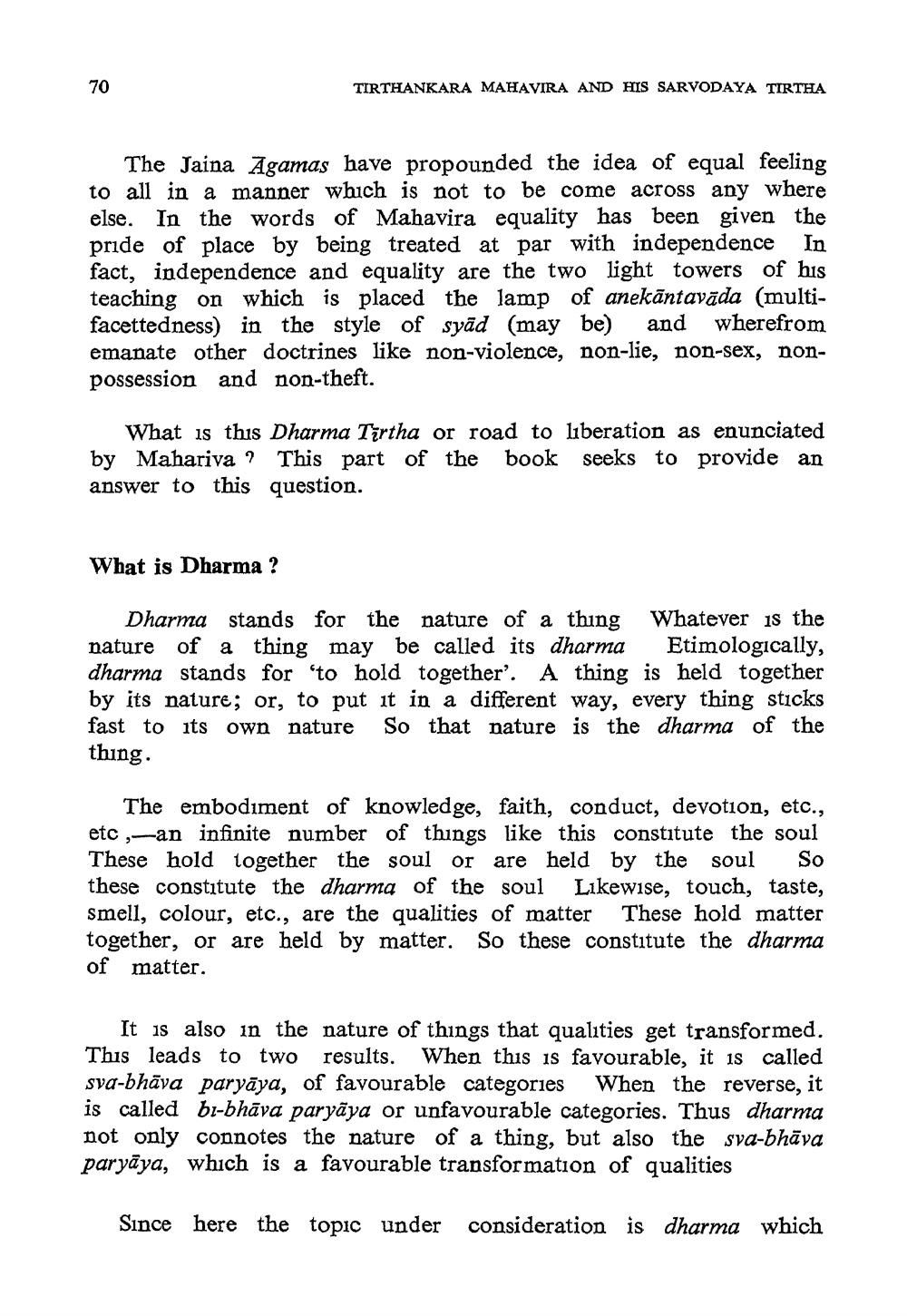________________
TIRTHANKARA MAHAVIRA AND HIS SARVODAYA TIRTHA
The Jaina Agamas have propounded the idea of equal feeling to all in a manner which is not to be come across any where else. In the words of Mahavira equality has been given the pride of place by being treated at par with independence In fact, independence and equality are the two light towers of his teaching on which is placed the lamp of anekāntavāda (multifacettedness) in the style of syâd (may be) and wherefrom emanate other doctrines like non-violence, non-lie, non-sex, nonpossession and non-theft.
What is this Dharma Tirtha or road to liberation as enunciated by Mahariva ? This part of the book seeks to provide an answer to this question.
What is Dharma ?
Dharma stands for the nature of a thing Whatever is the nature of a thing may be called its dharma Etimologically, dharma stands for 'to hold together'. A thing is held together by its nature; or, to put it in a different way, every thing sticks fast to its own nature So that nature is the dharma of the
thing
The embodiment of knowledge, faith, conduct, devotion, etc., etc ,-an infinite number of things like this constitute the soul These hold together the soul or are held by the soul So these constitute the dharma of the soul Likewise, touch, taste, smell, colour, etc., are the qualities of matter These hold matter together, or are held by matter. So these constitute the dharma of matter.
It is also in the nature of things that qualities get transformed. This leads to two results. When this is favourable, it is called sva-bhāva paryāya, of favourable categories When the reverse, it is called bi-bhāva paryāya or unfavourable categories. Thus dharma not only connotes the nature of a thing, but also the sva-bhāva paryāya, which is a favourable transformation of qualities
Since here the topic under
consideration is dharma which




